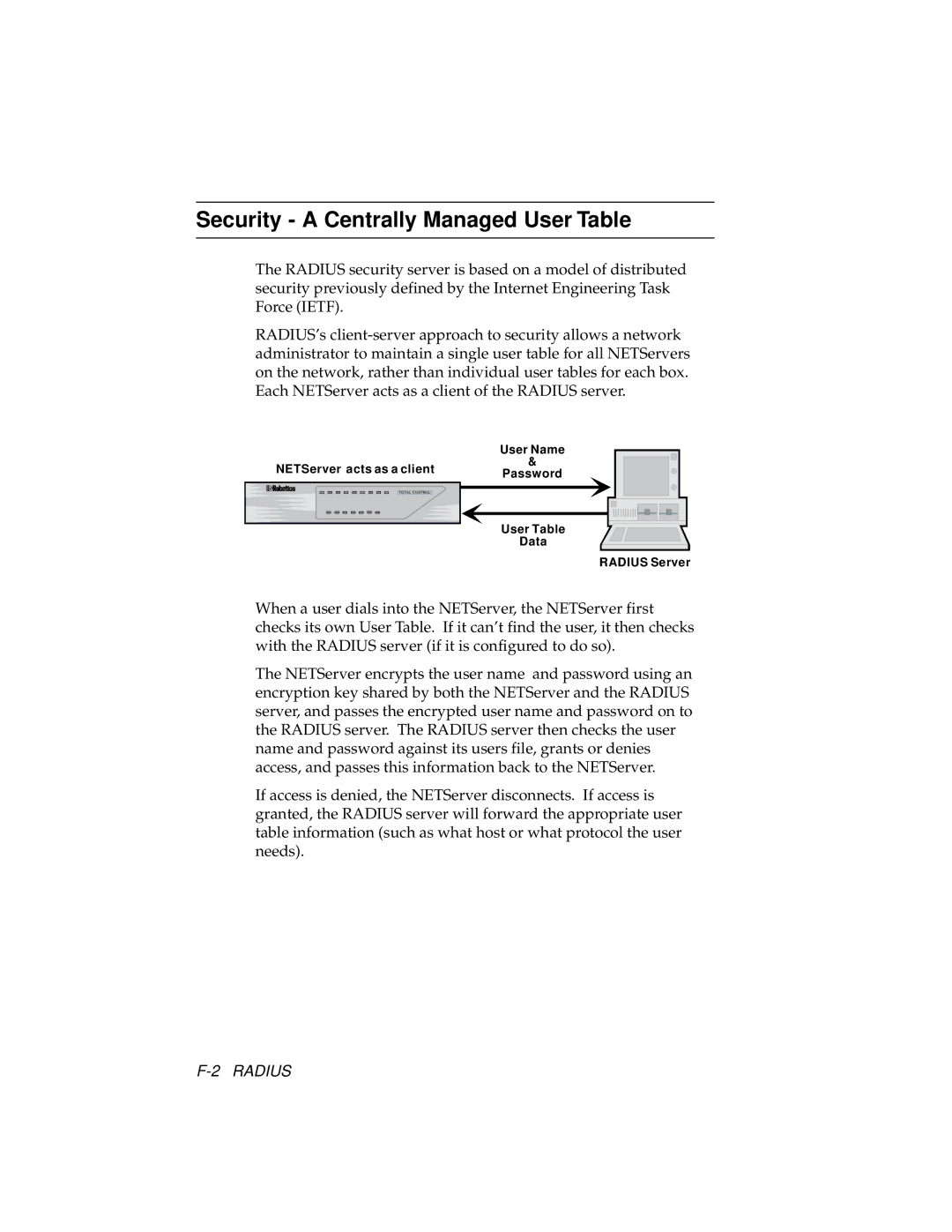
Security - A Centrally Managed User Table
The RADIUS security server is based on a model of distributed security previously defined by the Internet Engineering Task Force (IETF).
RADIUS’s
| User Name | |
NETServer acts as a client | & | |
Password | ||
| ||
| User Table | |
| Data |
RADIUS Server
When a user dials into the NETServer, the NETServer first checks its own User Table. If it can’t find the user, it then checks with the RADIUS server (if it is configured to do so).
The NETServer encrypts the user name and password using an encryption key shared by both the NETServer and the RADIUS server, and passes the encrypted user name and password on to the RADIUS server. The RADIUS server then checks the user name and password against its users file, grants or denies access, and passes this information back to the NETServer.
If access is denied, the NETServer disconnects. If access is granted, the RADIUS server will forward the appropriate user table information (such as what host or what protocol the user needs).
